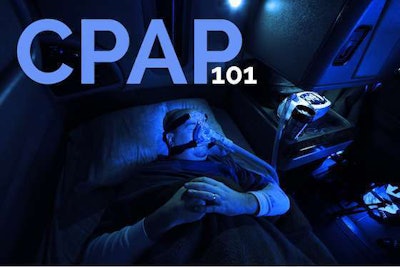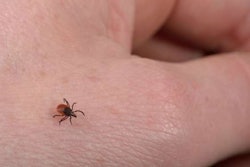


Getting diagnosed with obstructive sleep apnea can sound like a huge burden to shoulder for some truck drivers. Not only do you have to buy a continuous positive airway pressure — or CPAP — machine, if prescribed one, but you also have to adjust to wearing it each night.
Obstructive sleep apnea causes an individual to repeatedly stop and start breathing during sleep, according to the Mayo Clinic. There are other forms of sleep apnea but obstructive sleep apnea is the most common.
Some symptoms for sleep apnea, according to Mayo Clinic, include: loud snoring, excessive daytime sleepiness, headaches in the morning, high blood pressure, waking up with a dry mouth or sore throat, waking up abruptly by gasping or choking, difficulty concentrating during the day, and mood changes. Risk factors include obesity, high blood pressure, smoking, diabetes, asthma, having naturally narrow airways or chronic nasal suggestion. Men are twice as likely to have obstructive sleep apnea as women.
Untreated, sleep apnea can cause fatigue, cardiovascular problems, eye problems, memory problems, and other complications. And, in some cases, it’s possible the illness could jeopardize your ability to drive.
Federal Motor Carrier Safety Administration regulations say a “person with a medical history or clinical diagnosis of any condition likely to interfere with their ability to drive safely cannot be medically qualified to operate a commercial motor vehicle in interstate commerce.” While sleep apnea is not singled out, it does fall under that umbrella. With successful treatment, a truck driver can regain their medically qualified to drive status. A proposed rule was withdrawn last year that would have established a process to create sleep apnea screening requirements for truckers.
CPAP machines are the most common treatment. The machines work by forcing air through the airway during sleep via a hose and mask, but drivers often have concerns about the cost and comfort of the machines and their parts.
Truckers News talked with two truckers, company drivers Terry Batchelor and Joey Real, about the practical experience of being prescribed a CPAP machine to treat sleep apnea in this series. Upcoming installments will discuss their experiences — good and bad — with their CPAPS, how to adjust to wearing one, and how to meet the financial costs.










